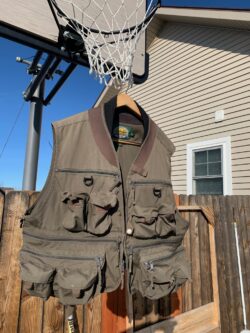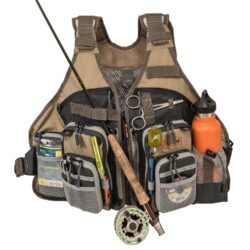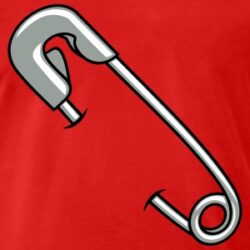Fishing vests are a personal choice. There are many styles and types to choose from. Some anglers are most concerned with style, fit, and look. For others, it is about function, organization, and purpose. Yet others prefer a chest pack style of gear. Some just shove lure/fly boxes into their pockets or have an over the shoulder creel organizer.
Invest in what you need. Vests offer organization and hold all the tools, tippet, and stuff that you may need for that fishing adventure. Pockets are sized to hold boxes, hooks, knot tools, forceps, glasses, tippet spools, licenses, and extra whatever’s that you may need. 
New anglers often venture onto the waters with a backpack full of gear. For others, less is more. My preference is for what I need.
How to pick your vest. Whatever vest you choose, get it one size larger than your body. There will be times when you wear coats and garments underneath the vest. You do not want a snug or skintight vest. 
Match the pockets to your needs Look at your fly boxes and pockets. Will you need new matching sized gear, or will you use what you have. Many anglers have several dedicated boxes. Ex. A dry fly box, nymph, streamer, midges, terrestrials, and… Some boxes are long and narrow, others are smaller. Choose boxes that a thin. Big, fat, wide boxes may not fit into the pockets and are just too bulky.
Zippers, Velcro, or buttons? Select a vest with pockets that secure. Yu do not want to lose gear when you lean over or fall out. Velcro works well but needs occasional cleaning. It also wears out over time. Buttons are a sad excuse for closure but are better than nothing. A zipper works well but also needs some maintenance and occasional lube. The zipper handles also have a way of hooking onto you fishing line. Consider a drop of hot glue at the zipper tag loop.
Net Attachment You should have a net hook up high on the back collar. A retriever reel will hold the net high and away from snags but quickly accessible. Magnet net holders work fine but I have found several detached nets over the years. Once the magnet is detached, the net may need to be dropped if the fish makes another run. Now your net is on the ground and not where you need it.
Tool, patches, and misc. pockets. Fly patches are convenient but uncovered, exposed patches are a quick way to lose flies. I prefer a flap over my patch. Forceps are self-locking and need to be available on the outside of the vest. Nippers, scissors, and other gear need to be on elastic or retractors. You do not want a bunch of strings and cords exposed. This leads to more tangling and less angling.
Tippet storage Hanging tippet spools on the outside of your vest creates a tangle risk and allow the tippet to be exposed and ruined by the sun. Choose a vest with small tippet pockets. They are usually on the inside and have 4 pockets per side. Arrange tippet from small to large, in sequence.
Vest color Fish do not see colors. They are also in the water looking up. Consider their view. Earth tones are relevant. Camo works. Sky camos especially. A blue, green, tan, brown makes sense. Bright colors reflect more light, which fish can see. Think about this when picking a vest, shirt, or hat.
Optics You will want an interior, protected pocket to store glasses. Normally, my glasses are on a cord around my neck. When not needed, they are put into a thin case and into a pocket. Great glasses are expensive, so you do not want to lose them. Cheaters, for knot tying, also need to be handy.
Safety New vests may also come with floatation or inflatable life saving features. Having the pockets secure means that you won’t lose anything, if and when you fall in. The net can help you get control and back onto your feet again.
Other stuff Have a safety pin secured on your vest. This is the best tool for untangling. Forceps also have many uses. They work well for pulling out hooks, splinters, and unhooking fish. I prefer the ones with large finger holes and bent front jaws. Also carry a small emergency box. This box will have reel and rod repair stuff, small tools, matches, aspirin, a bug repellant wipe, and maybe a few dollars in case a stream side bar happens along. The vests back and unavailable pockets can carry less needed items like raingear, toilet paper, and …
Fishing time is often limited and precious. Wasting time searching for gear is no fun. Once you select a vest, stick with it, and keep things simple and in the same places. When it is time to fish, all you need to do is grab your vest and go.
Invest wisely!
Montana Grant